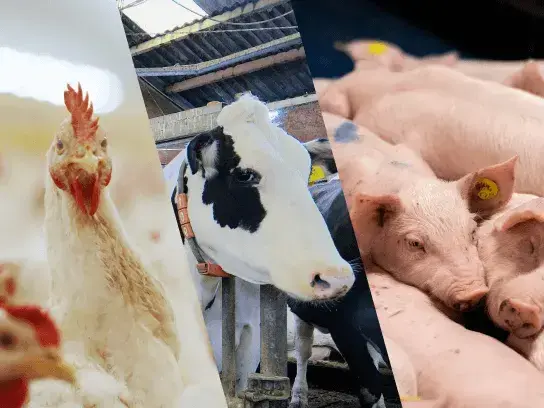- Poultry
- Laying Hens
- 2 minutes read
Enhancing egg production is crucial for any commercial layer farm’s productivity and profitability. One factor that plays a key role here is lighting. At HATO, we specialize in designing lighting solutions, aimed to boost farm productivity and profitability.
We recently conducted a study on light flicker. Light flicker refers to rapid and repeated changes in brightness levels of light over time. A factor that could potentially influence egg production and profitability, but also the well-being and behaviour of the hens.
In this blog post, we're excited to share some of the interesting results of our study around the impact of flicker-free lighting on egg production and profitability.
Research Purpose & Methodology
Our goal was to determine if flicker-free lighting causes less unwanted behaviour and better performances in commercial layers compared to flickering lighting.
We compared two identical aviary houses, both housing brown hens. Both houses were equipped with lighting that has the same lux levels and colour temperature. What did vary was the light flicker index: CORAX DDS 0.00 vs other lamp 0.66.
The Impact on Egg Production
 Our study concluded that flicker-free lighting could effectively increase egg production in commercial layers. With flicker-free lighting, the cumulative laying percentage per hen-housed achieved 86.6%, a clear improvement over the 84.9% reached with flickering lighting. That translates to a noteworthy 1.7% increase.
Our study concluded that flicker-free lighting could effectively increase egg production in commercial layers. With flicker-free lighting, the cumulative laying percentage per hen-housed achieved 86.6%, a clear improvement over the 84.9% reached with flickering lighting. That translates to a noteworthy 1.7% increase.
Even more compelling was the change in the cumulative number of eggs laid per hen-housed. Flicker-free lighting led to an impressive count of 302.8 eggs, while flickering lighting achieved a lower figure of 296.6 eggs over a period of 67 weeks. This difference of 6.2 eggs per hen-housed could mean an additional 310,000 eggs for a farm with 50,000 hens!
More information on the numbers? Download our full research paper for free.
Additional Profits from Enhanced Egg Production
 The switch to flicker-free lighting also impacts the farm's bottom line. The additional 6.2 eggs per hen-housed equates to 310,000 extra eggs for a facility housing 50,000 hens. Assuming an average egg weight of 62g, this boost in production would lead to an extra 19,220 kg of eggs. Given the egg price of €2.40 per kg (Netherlands, March 2023), you could be looking at an increase in revenues of around €45,000 (over a period of 67 weeks). As the feed conversion rates were similar for both houses at 2.16, this increased revenue represents pure additional profit.
The switch to flicker-free lighting also impacts the farm's bottom line. The additional 6.2 eggs per hen-housed equates to 310,000 extra eggs for a facility housing 50,000 hens. Assuming an average egg weight of 62g, this boost in production would lead to an extra 19,220 kg of eggs. Given the egg price of €2.40 per kg (Netherlands, March 2023), you could be looking at an increase in revenues of around €45,000 (over a period of 67 weeks). As the feed conversion rates were similar for both houses at 2.16, this increased revenue represents pure additional profit.
Lower mortality, higher well-being
Our research discovered a significant difference in multiple other factors, such as lower mortality and higher well-being, between the flicker-free and the flickering house. More information about this can be read in our full research paper.
Conclusion

Increasing egg production in commercial layers could be as simple as switching to flicker-free lighting. Not only does it boost egg production and profits.. it can also improve well-being and reduces mortality of the hens.
Curious about all results of the research paper? Download it today!
Stay informed
Lighting matters. That's why we share our knowledge with the world through HATO Insights.
Poultry
Beak Trimming Bans: Lighting the Way Forward for Poultry Welfare
The practice of beak trimming in laying hens has long been a controversial topic within the poultry industry. With increasing concerns for animal welfare,...
Pigs
7 Key Ways Light Cycles Enhance Animal Health and Boost Productivity
Light is a fundamental aspect of life, influencing the daily routines and overall well-being of animals. In this comprehensive guide, we explore seven key ways...
Since 1974, we've been working on the best lighting solutions for the agricultural sector.
Improving life through brightness
HATO Insights
Find out how switching to good LED lighting improves performance and reduces costs.
Learn how color lighting affects different poultry species and improves their performance

.webp)
.webp)
